Hakkai includes Soto-hakkai(外八海), Uchi-hakkai(内八海), Moto-hakko(元八湖). Uchi-hakkai means eight lakes including the Fuji Five Lakes around Mt. Fuji. Soto-hakkai means seven lakes and a beach including Lake Biwa, Lake Suwa in wide-ranging areas of Japan. Moto-hakko means Oshino Hakkai(eight springs). It was regarded as an important ascetic training to make pilgrimages to one of them after climbing Mt. Fuji. Soto-hakkai was treated as a special case. Pilgrims went around Uchi-hakkai or Moto-hakko, and performed cold water ablutions at each site.
Lake Motosuko
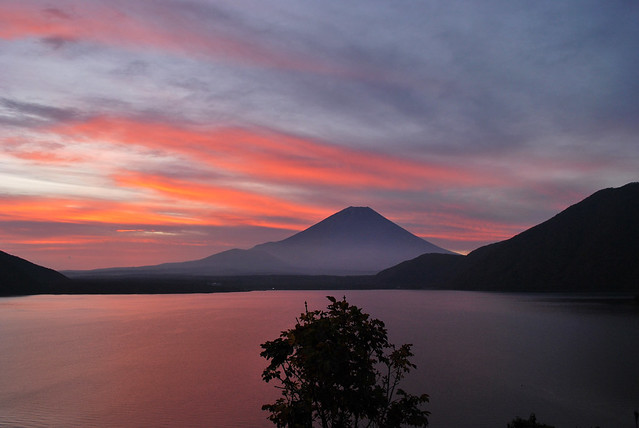 |
| 秋、早朝、本栖湖、富士山! by Mt.Fuji early morning, November 02 by [puamelia] /flickr |
Lake Yamanakako
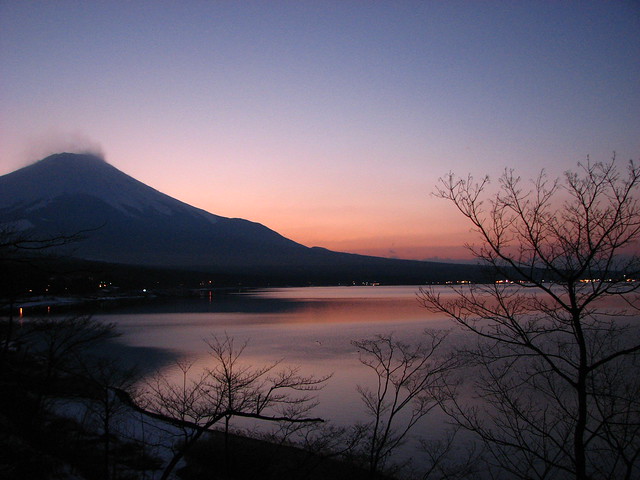 |
| 山中湖と富士山 by ucb /flickr |
In Oshino Village, many villagers died of the great famine that has begun in 1833, and lasted until 1837. A headman of the village planned to take advantage of Fuji-ko to revive the village. He developed eight spring-fed ponds from the springs in the village so that Fuji-ko pilgrims could perform a tour of Hakkai in the village. At each of the eight spring-fed ponds in Oshino, one of the Eight Dragon Kings(Hachidai Ryuo) is enshrined.
Some people say that Mt. fuji is best viewed from the Oshino Village.
However, there are artificial ponds other than the eight spring-fed ponds in the village now. They are misleading. Some people are concerned that they cause environmental damage including declining quality and depletion of the eight spring-fed ponds.
Actually, a water mill in the village draws water from Nigoriike Pond, so it reduced the amount of the pond's water.
 |
| photo by 高画質壁紙写真集無料壁紙 |
The water flowed from Nigoriike Pond to an artificial pond called Nakaike.
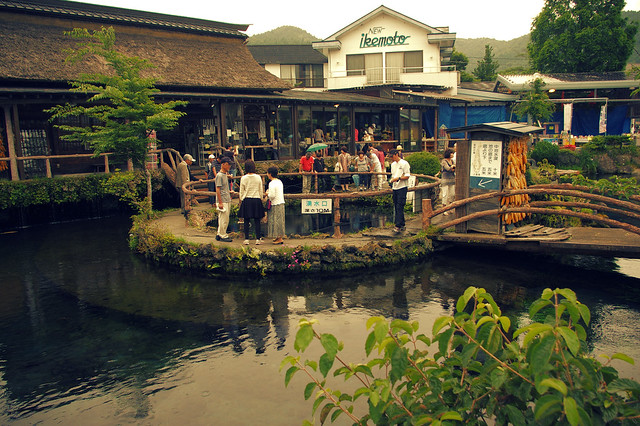 |
| Lake Kawaguchi by kwkd /flickr Nakaike |
This spot abounds in tourists, but it has nothing to do with the eight spring-fed ponds.
 |
| photo by 高画質壁紙写真集無料壁紙 |
Deguchiike Pond is one kilometer away from other spring-fed ponds, so few people visit here.
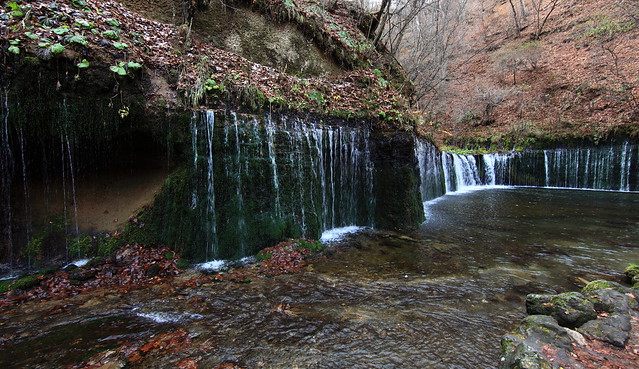 |
Waterfall / 白糸の滝(しらいとのたき) by TANAKA Juuyoh (田中十洋) /flickr
|
Shiraito waterfalls
It is said that Hasegawa Kakugyo performed cold water ablutions by Shiraito waterfalls in Fujinomiya City. The waterfall came to be a place for ascetic training.
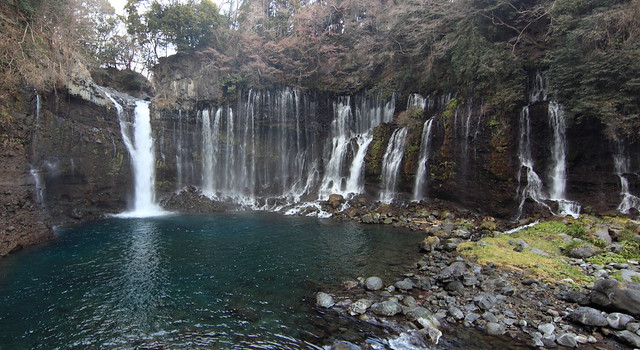 |
Waterfall / 白糸の滝(しらいとのたき) by TANAKA Juuyoh (田中十洋) /flickr
|
Kawaguchi Asama-jinja Shrine(河口浅間神社) in Fujikawaguchiko-machi, Yamanashi Prefecture
A theory says that Kawaguchi Asama-jinja Shrine was build in 865 after Fuji's eruption in 864. Along with Yoshida, Kawaguchi was the north base for climbing Mount Fuji. So the village attracted many Fuji-ko pilgrims. There were many oshi lodging house. While Yoshida became very popular among pilgrims in the latter Edo Period, Kawaguchi went into a decline.
Now Kawaguchi Asama-jinja Shrine is a tranquil shrine surrounding the large trees. The shrine has few visitors, but local people esteem it highly. Its chief priest made a small income at the shrine. So he made a living as a judicial scrivener and visited the shrine during a work break.
Now he remains at the shrine during the day because Mount Fuji including this shrine was registered as a World Heritage Site.
Fuji Omuro Segen-jinja Shrine(冨士御室浅間神社) in Fujikawaguchiko-machi, Yamanashi Prefecture
According to legend, the main shrine of the Fuji Omuro Segen-jinja Shrine was build at the 2nd station on Fuji in the early 9th century. Its satomiya shrine (shrine built in village area as a worship space) was built by Lake Kawaguchi in 958. The the current main shrine was built in 1612, and moved to the ground of its satomiya shrine in 1973. The shrine flourished with Shugendo in the middle ages, Fuji-ko in the Edo Period. Many old documents relating to the Takeda clan are stored at the shrine.
 |
| main shrine of Fuji Omuro Segen-jinja Shrine photo by 列島宝物館 |
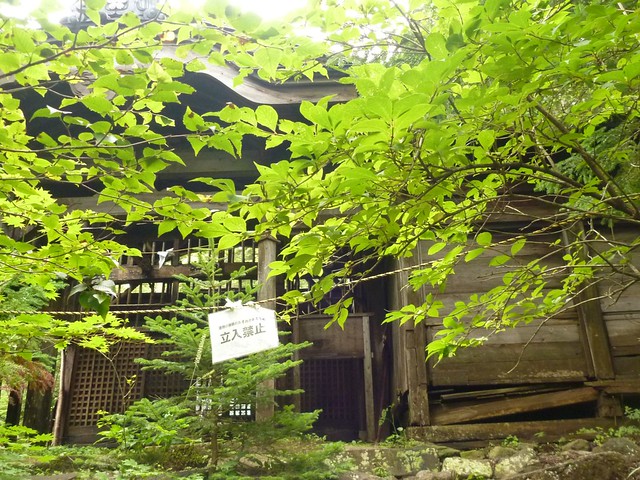 |
| 富士山御室浅間神社, 一合目から富士山に登るClimbing Mt.fuji, from the starting point of Yoshidaguchi Climb Trail by jetalone /flickr |
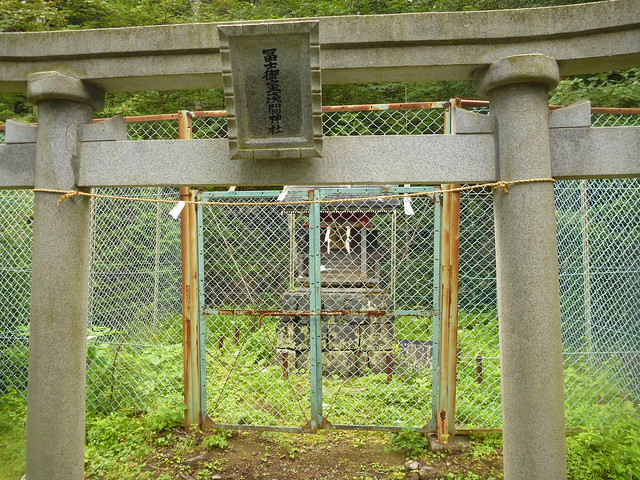 |
富士山御室浅間神社,一合目から富士山に登る Climbing Mt.fuji, from the starting point of Yoshidaguchi Climb Trail
by jetalone /flickr |
Suyama Sengen-jinja Shrine(須山浅間神社) in Susono City, Shizuoka Prefecture
The Suyama route begins at Suyama Sengen-jinja Shrine(須山浅間神社). It is confirmed that the shrine already existed in 1524. Its main shrine and the route were destroyed by a great eruption in 1707. The existing main shrine was rebuilt in 1823.
World Heritage site Mount Fuji includes Suyama route(current Gotenba route) located at an altitude of more than 2050 meters around Suyama Otainai. The route was devastated by a great eruption in 1707. The entire route was restored in 1780.
Nowadays about 5% of Fuji climbers take the Gotenba route in Shizuoka Prefecture. The route includes a long and steep sand hill called o-sunabashiri(大砂走り). Fuji-ko pilgrims used to dash down the hill. Now few climbers take this route. Fuji climbers who run down the hill say, "It's a lot of fun!" Stride length can be 3 meters. However, the hill is too long to run down without stopping. Mt. Fuji last erupted in 1707 from Hoei crater. Fuji climbers can walk on the crater floor.
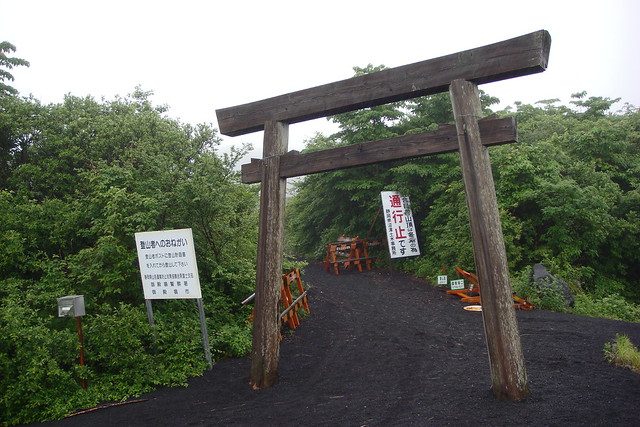 |
| Mt. Fuji (Gotemba Route) by Hyougushi /flickr |
O-sunabashiri
O-sunabashiri, and Hoei crater pictured right.
Fuji Sengen-jinja Shrine (Subashiri Sengen-jinja Shrine) (冨士浅間神社(須走浅間神社)) in Shizuoka Prefecture
The Subashiri route begins at Fuji Sengen-jinja Shrine (Subashiri Sengen-jinja Shrine). Many Fuji-ko pilgrims visited the shrine.
The shrine flourished under the protection of the Takeda clan in the 16th century.This shrine shared the right to pick up coins thrown into the crater as monetary offering with the Fujisan Hongu Sengen Taisha. In the Edo Period, the shrine had a dispute with the Fujisan Hongu Sengen Taisha over the monetary offering. The Tokugawa Shogunate ruled that both shrines split the monetary offering sixty-forty and Fuji Sengen-jinja Shrine managed Yakushi-do (present Kusushi Jinja Shrine) on the Fuji's summit. The Fuji Sengen-jinja Shrine gained 40% of the offering.
The shrine, Subashiri Village near the shrine and the route were devastated by a great eruption in 1707. The village had volcanic tephra 3 meters deep. In the village, 37 houses were burned down, and 36 houses and three temples collapsed. The shrine was heavily damaged, its torii gate was half-buried in volcanic tephra. Its main shrine was almost buried, and only its roof was visible. The route was restored in 1708, and the shrine was rebuilt in 1718. The shrine and route regained Fuji-ko pilgrims.
Kusushi Jinja Shrine is current Okumiya (interior shrine) of the Fujisan Hongu Sengen-taisha Shrine.
World Heritage site Mount Fuji includes Subashiri route(須走口登山道, Subashiriguchi climbing trail) above the fifth station.
About 11% of Fuji climbers take the Subashiri route in Shizuoka Prefecture. Subashiriguchi climbing trail merges with Yoshidaguchi climbing trail at the Mt. Fuji 8th Station. Kakebotoke inscribed with the year 1384 was excavated from the route. Kakebotoke is a round copper plaque with a Buddhist figure for hanging. Although Subashiriguchi climbing trail was also devastated by a great eruption in 1707, it was restored with assistance provided by the Tokugawa Shogunate in 1708.
My grandfather climbed from the foot of Mt. Fuji by taking the Subashiri route long before World War II.
Subashiri route
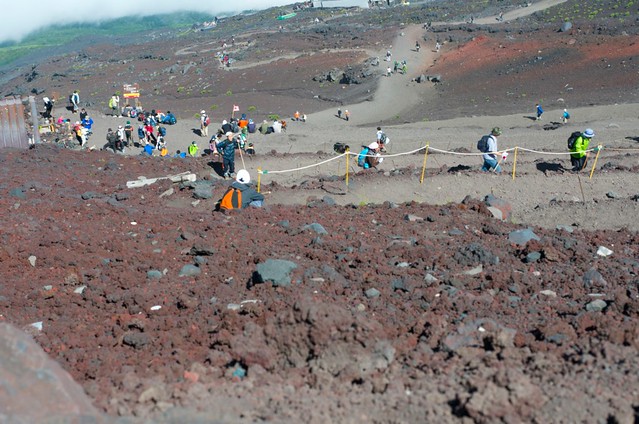 |
| 須走口登山道 by masahiko /flickr |
Mount Fuji has been worshipped and loved by the Japanese people since ancient times and has long attracted artists. The first poem featuring Fuji that comes to my mind is a waka poem written by Yamabe no Akahito around the early eighth century.
The Mihonomatsubara pine tree grove(三保の松原) was added to the World Heritage List as part of the Fujisan Cultural Site. The grove was listed as a source of artistic inspiration. There was little hope that the pine groves was added to the list. Because it is 45km away from Mt.Fuji. That was a come-from-behind victory.
 |
| The Miho no Matsubara pine forest is seen against the backdrop of the dim shape of Mt. Fuji. photo by 日本列島お国自慢 |
 | |
|
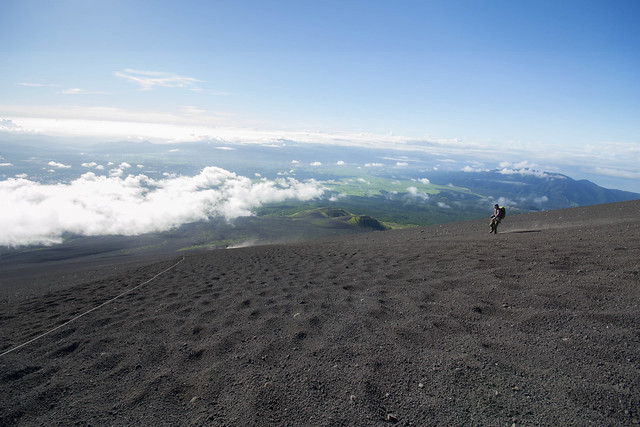
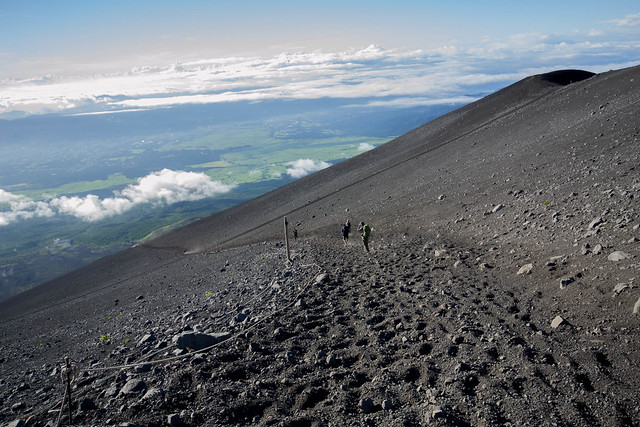
Thank you for such a nice series of articles on Mount Fuji!
ReplyDeleteMost places included in Mt. Fuji World Heritage Site are unspectacular.
DeleteWater restriction in the Tone River started, but residents of Kanagawa Prefecture are less concerned about water shortage thanks to Mt. Fuji for now.
Your photos here have some beautiful lustrous tones that really captures Mt. Fuji and I particularly like the first shot of Lake Motosuko..great work!
ReplyDeleteThanks! I'm happy to be praised.
Delete